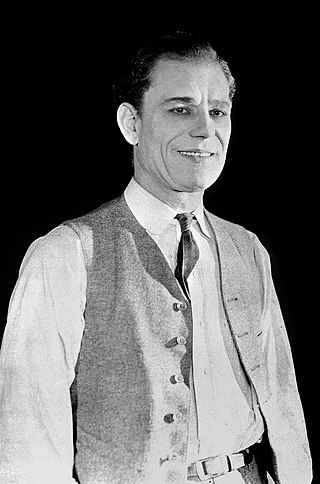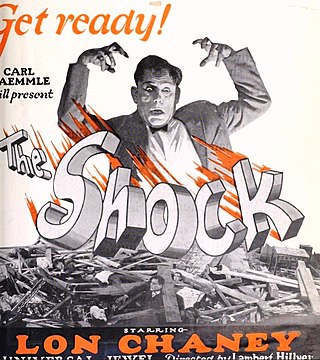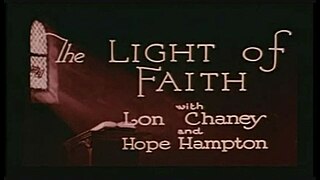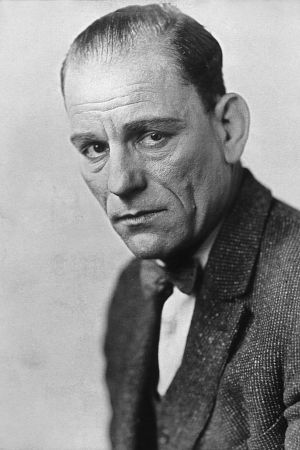
The Motion Picture Patents Company, founded in December 1908 and effectively terminated in 1915 after it lost a federal antitrust suit, was a trust of all the major US film companies and local foreign-branches, the leading film distributor and the biggest supplier of raw film stock, Eastman Kodak. The MPPC ended the domination of foreign films on US screens, standardized the manner in which films were distributed and exhibited within the US, and improved the quality of US motion pictures by internal competition. It also discouraged its members' entry into feature film production, and the use of outside financing, both to its members' eventual detriment.
The year 1914 in film involved some significant events, including the debut of Cecil B. DeMille as a director.
1913 was a particularly fruitful year for film as an art form, and is often cited one of the years in the decade which contributed to the medium the most, along with 1917. The year was one where filmmakers of several countries made great artistic advancements, producing notable pioneering masterpieces such as The Student of Prague, Suspense, Atlantis, Raja Harischandra, Juve contre Fantomas, Quo Vadis?, Ingeborg Holm, The Mothering Heart, Ma l’amor mio non muore!, L’enfant de Paris and Twilight of a Woman's Soul.

Leonidas Frank "Lon" Chaney was an American actor and makeup artist. He is regarded as one of the most versatile and powerful actors of cinema, renowned for his characterizations of tortured, often grotesque and afflicted, characters and for his groundbreaking artistry with makeup. Chaney was known for his starring roles in such silent horror films as The Hunchback of Notre Dame (1923) and The Phantom of the Opera (1925). His ability to transform himself using makeup techniques that he developed earned him the nickname "The Man of a Thousand Faces".

London After Midnight is a lost 1927 American silent mystery horror film directed and co-produced by Tod Browning and starring Lon Chaney, with Marceline Day, Conrad Nagel, Henry B. Walthall and Polly Moran. The film was distributed by Metro-Goldwyn-Mayer, and was written by Waldemar Young, based on the story "The Hypnotist" which was written by Browning. Merritt B. Gerstad was the cinematographer, and the sets were designed by Cedric Gibbons and Arnold Gillespie. Harry Sharrock was the assistant director. The film cost $151,666.14 to produce, and grossed $1,004,000. Chaney's real-life make-up case can be seen in the last scene of the film sitting on a table, the only time it ever appeared in a film.

The Shock is a 1923 American silent drama film directed by Lambert Hillyer and starring Lon Chaney as a disabled man named Wilse Dilling. The film was written by Arthur Statter and Charles Kenyon, based on a magazine story by William Dudley Pelley. This is one of the rare Lon Chaney films where he gets the girl. The film is readily available on DVD.

Thunder is a 1929 American synchronized sound melodrama film starring Lon Chaney and directed by William Nigh. The film has no audible dialogue but featured a synchronized musical score and sound effects. The soundtrack was recorded using the Western Electric Sound System sound-on-film process. The soundtrack was also transferred to discs for those theatres that were wired with sound-on-disc sound systems. Thunder was Chaney's penultimate film appearance and his last film without audible dialogue.

Tell It to the Marines is a 1926 American silent romantic drama film directed by George W. Hill and starring Lon Chaney, William Haines, and Eleanor Boardman. The film follows a Marine recruit and the sergeant who trains him. It was the biggest box office success of Chaney's career and the second biggest moneymaker of 1926/1927.
The Honor of the Family is a 1912 American silent short drama film produced by the Rex Motion Picture Company. The film is a melodramatic one between two brothers and a woman named Marja. Gerald admires the girl and warns his visiting brother, Claude, to leave her alone. Infatuated, Claude and Marja secretly marry before Claude returns to England with a promise to return for her. As the months pass, Marja becomes broken-hearted and attempts suicide, but ends up crippled for life. Claude dies and Gerald cares for Marja, even forging a letter to keep her spirits up. Marja comes to love Gerald and all is revealed on a later date.
The Ways of Fate is a 1913 American silent short romance film produced by the American Film Manufacturing Company. The film's directorial and producer roles have been both attributed to Allan Dwan, but other sources point to Wallace Reid as director. The film's fictional plot is centered on Jim Conway, who grew up wanting to avenge his father's death and headed West to seek his father's killer. Lost in the mountains, he is saved by a young woman and the two fall in love. After a few weeks with her, Conway reveals the reason he came west and the young woman's father overhears it. The old man confesses to killing Conway's father, over a game of cards, and bares his chest. Conway refuses to take revenge, because love had diminished such feelings. The film was released on April 19, 1913 and it had a widespread national release. It is not known whether the film currently survives, but it is presumed lost.

Shon the Piper is a 1913 American silent short historical romantic drama film directed by Otis Turner, starring Robert Z. Leonard and Lon Chaney. The film follows a Scottish Duke who disguises himself as a piper and falls in love with a woman by the name of Madge. The woman's father refuses to let the two marry because he wants his daughter to marry the Laird of the Isla. At the wedding, Shon steals Madge away and a battle ensues between the clans.

The Restless Spirit is a 1913 American silent short drama film written and directed by Allan Dwan, featuring J. Warren Kerrigan, Lon Chaney, and Pauline Bush. The film is based on Thomas Gray's 1751 poem, Elegy Written in a Country Churchyard, and tells the story of a man who wishes to be a conqueror. A series of illusions follows which show him the futility of conquest when he cannot even conquer his own community.
Almost an Actress was a 1913 American silent short comedy film directed by Allen Curtis and starring Louise Fazenda, Max Asher, Lon Chaney and Silvion de Jardin. A surviving still from the film shows Lon Chaney as the exasperated cameraman, grimacing in frustration as chaos envelops the film set. The film is now considered lost. It is unknown when the film was lost, but if it was in Universal's vaults it would have been deliberately destroyed along with the remaining copies of Universal's silent era films in 1948.

Bloodhounds of the North is a 1913 American silent short drama film directed by Allan Dwan and starring Murdock MacQuarrie, Pauline Bush, and Lon Chaney. The film is now considered lost. Some sources state the film was edited down to one reel and re-released theatrically in 1916 as Accusing Evidence, but this is disputed.

The Honor of the Mounted is a 1914 American silent short drama film directed by Allan Dwan and featuring Murdock MacQuarrie, Pauline Bush, and Lon Chaney. The film is now considered lost.

Treasure Island is a 1920 silent film adaptation of the 1883 novel by Robert Louis Stevenson, directed by Maurice Tourneur, and released by Paramount Pictures. Lon Chaney played two different pirate roles in this production, "Blind Pew" and "Merry", and stills exist showing him in both makeups. Charles Ogle, who had played Frankenstein's Monster in the first filmed version of Frankenstein a decade earlier at Edison Studios, portrayed Long John Silver. Wallace Beery was supposed to play Israel Hands, but that role went to Joseph Singleton instead. The film was chosen as one of the Top Forty Pictures of the Year by the National Board of Review.

Voices of the City is a 1921 American silent crime drama film starring Leatrice Joy and Lon Chaney that was directed by Wallace Worsley, based on the Leroy Scott novel The Night Rose. The film took more than 9 months to be released due to a controversy over the proposed title and the film's abundance of gunplay. The film was retitled Voices of the City and was only released in December 1921, although it had been completed in early March. The film is still listed under The Night Rose in some reference sources.

The Light in the Dark is a 1922 American silent drama film directed by Clarence Brown and stars Lon Chaney and Hope Hampton. It is around 50% lost. A still exists showing Lon Chaney in the role of Tony Pantelli. Some scenes were filmed in Color.

Lon Chaney was an American actor during the age of silent films. He is regarded as one of cinema's most versatile and powerful actors, renowned for his characterizations of tortured, sometimes grotesque and afflicted characters, and his groundbreaking artistry with makeup. Chaney is known for his starring roles in such silent horror films as The Hunchback of Notre Dame (1923) and The Phantom of the Opera (1925). His ability to transform himself using makeup techniques that he developed earned him the nickname "The Man of a Thousand Faces."

The Gift Supreme is a 1920 American silent drama film starring Bernard Durning, Seena Owen, Lon Chaney and Tully Marshall. The film was directed by Ollie Sellers and based on the 1916 novel of the same name by George Allan England. Most sources do not state who wrote the screenplay, although it was probably written by Ollie Sellers. The assistant director was Justin McKlosky. The supporting cast includes Melbourne MacDowell, Eugenie Besserer, Jack Curtis, Anna Dodge and Claire McDowell. Some sources state the film was released on April 12, 1920, but the majority say May 9.
















